When the place we call home is also the place where we work and create, it defines us as much as we define it. Makers and founders everywhere are at the heart of the communities where they do business. This series,And Nowhere Else, examines the relationship between the places they live and what they choose to create.
城市,但平易近人。大都会,但这rly. The Greater Toronto area is a cultural mosaic of 6 million, where many feel like they can be who they are while fitting into a larger collective picture. With their city perched just north of Lake Ontario, many Torontonians are driven by its communal connectivity and have started their own businesses to not only create something for themselves but for those around them.
As someone who calls The Six home (thanks, Drake), I feel the city is very much a part of who I am. And this essence of symbiotic coexistence is a theme that runs true with creators who’ve sparked change through their work. Meet those who are pushing the boundaries within their industries while adding more color to this community.

The guy making it easier to be a locavore
A farm within the city? That may sound odd to some urban dwellers, though not in Toronto, where Fresh City Farms is a staple for many. Sprouting from a single organic farm at the north end of the city, Fresh City Farms has grown to include three farms, organic grocery delivery services, two storefronts (with another on the way), and a catering business. It’s hard to imagine that this was all started by an investment lawyer with virtually no farming experience: Ran Goel, a one time Wall Street hedge fund lawyer.
During the financial crisis that began in 2008, Ran started to question the value and anchors of our financial system. He realized that “if you get food right, you get so many other things right—climate change, public health, human rights issues, and, more importantly, it just tastes right.” Despite not even knowing where to search for empty lots of land, Ran took the idea of changing our food system and ran with it. That’s not to say he lacked self-doubt: “There was definitely a lot of ‘Are you sure you wanna do this?’ It’s very difficult with no set model,” recalls Ran from his Ossington neighborhood storefront, with his toddler, Gabriel, by his side.
Close to a decade later, Ran has made it easier for Torontonians to eat organic foods grown locally. Things came full circle with the launch of their catering services: Ran mined his experiences eatingcatered luncheson Wall Street and brought a fresh option to those who might not be actively seeking a locavore diet.
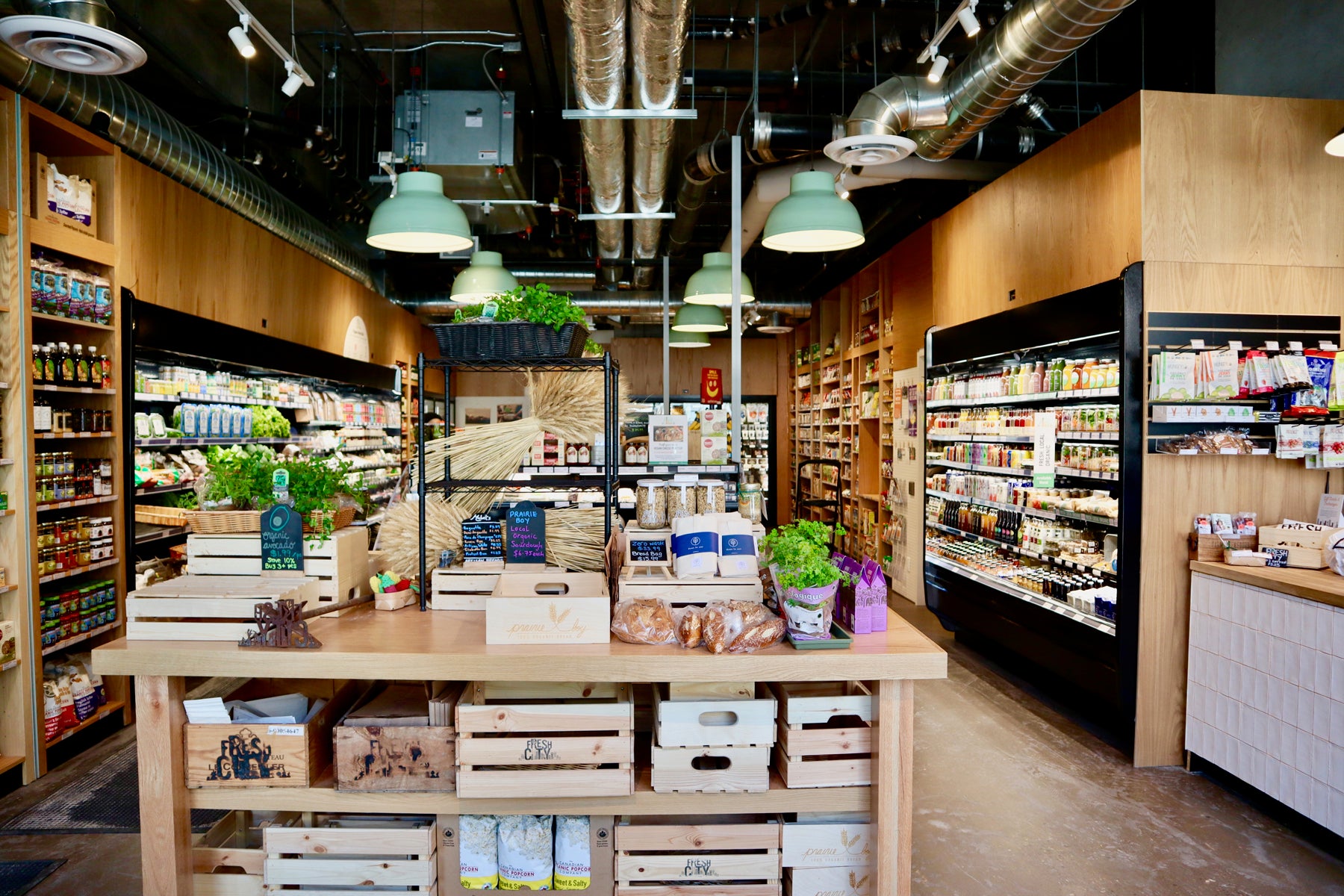
Why she crafts modern-day heirlooms
I first came acrossCadette Jewelryas I scrolled through Instagram and a pair of earrings caught my eye. Their fluid form, I thought, would feel like an organic extension to any lobe, and that sense of effortless elegance can be seen in all of Allison Asis’s pieces.
Allison started like many aspiring jewelry makers—“going to craft stores, getting beads and chains, and assembling pieces.” Over some French-pressed coffee in her home, she opens up about her journey, being a kid drawn to the arts before diving deeper into the craft of creation by learning about silversmithing, sawing metals, and soldering—not to mention falling in love with wax-casting. “That’s when I really started to see my own skill-set develop, and I was finally proud to put these pieces out into the world,” Allison recalls.
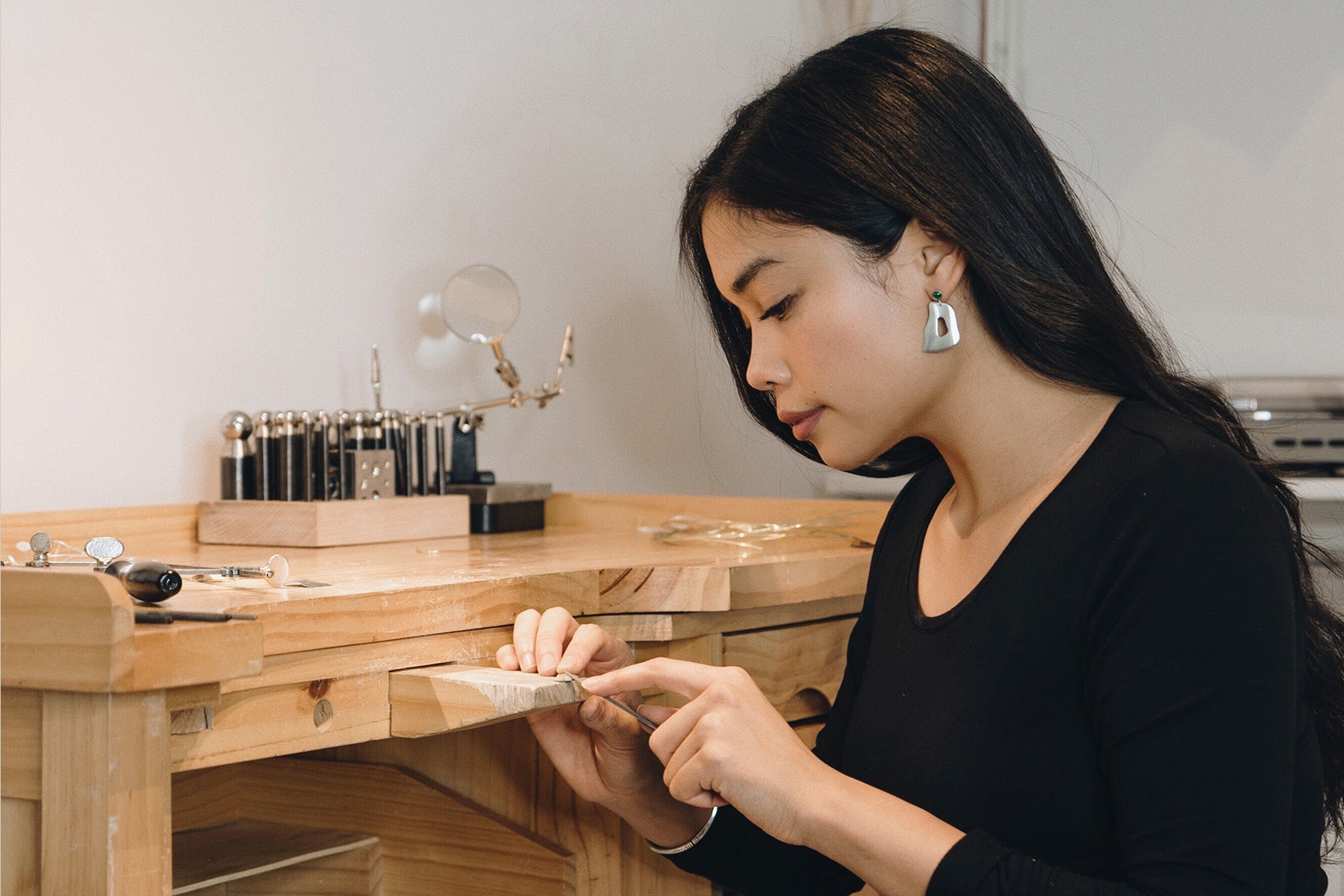

Inspired by the women in her life, Allison tries to create “modern-day heirlooms” for them with meaning. Being a jill of all trades when it comes to managing her business means battling a certain lifestyle: “The reality of being a solopreneur is loneliness,” she says. But having coffee chats and meetups with fellow makers from Toronto invigorates Allison, and she says she never feels alone in the grind. In fact, Allison uses her platform to shine a spotlight on her other local founders through a series of “Cadette Women” videos, blogs, and social posts.
A perfect pairing
Toronto is leaving a mark on the bean-to-bar chocolate movement and increasingly being recognized nationally and internationally, thanks, in part, to the founders behind businesses likeSOMAandChocoSol, who have used their accolades and their dedication to direct trade to pave the way. Similarly,The Green BeaneryandPilot Coffeehave elevated Toronto’s coffee scene by focusing on where they source, and how they roast their beans.
But one special place in the city is fusing chocolate and coffee together with sweet richness—Soul Roasters.
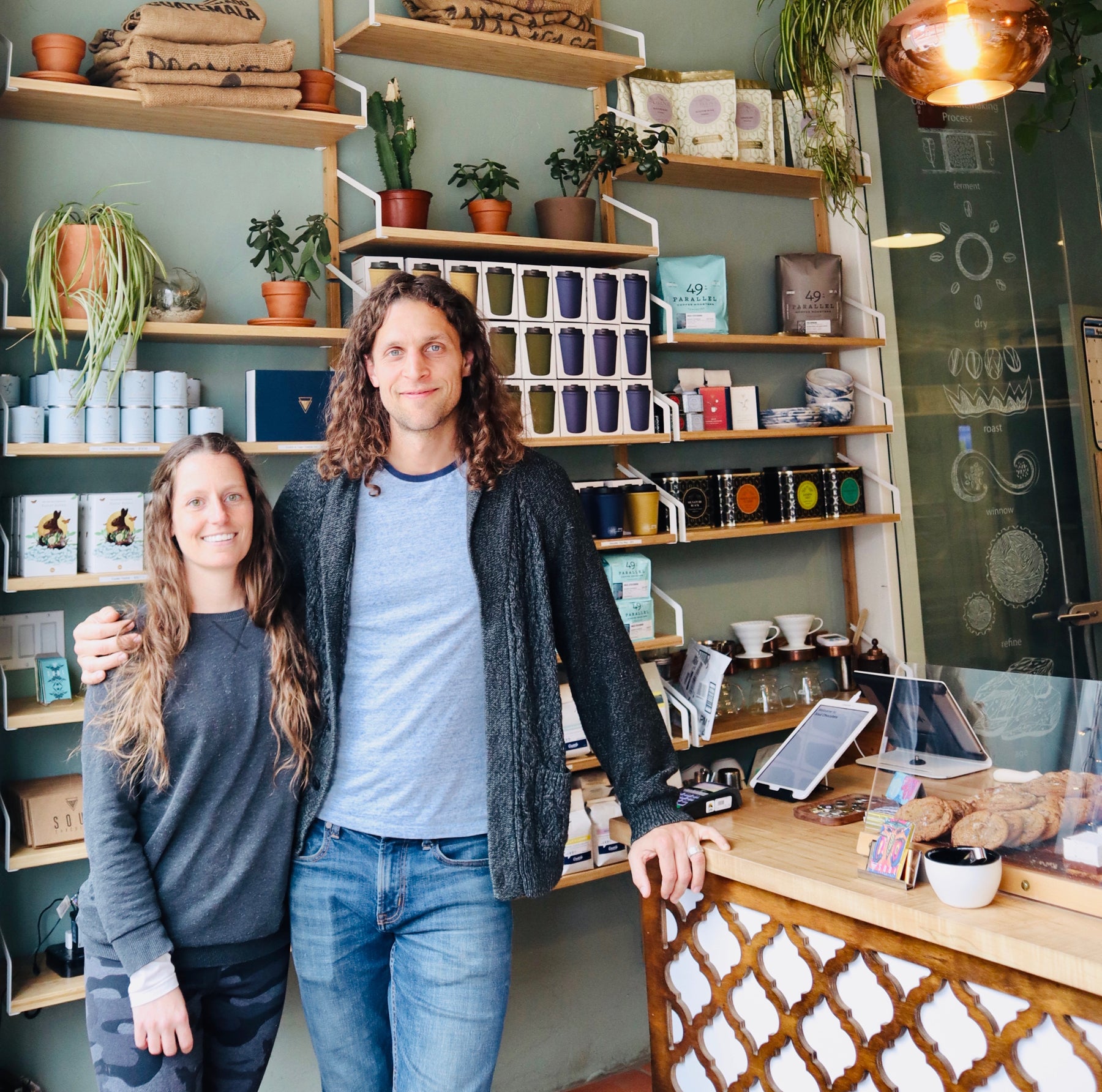
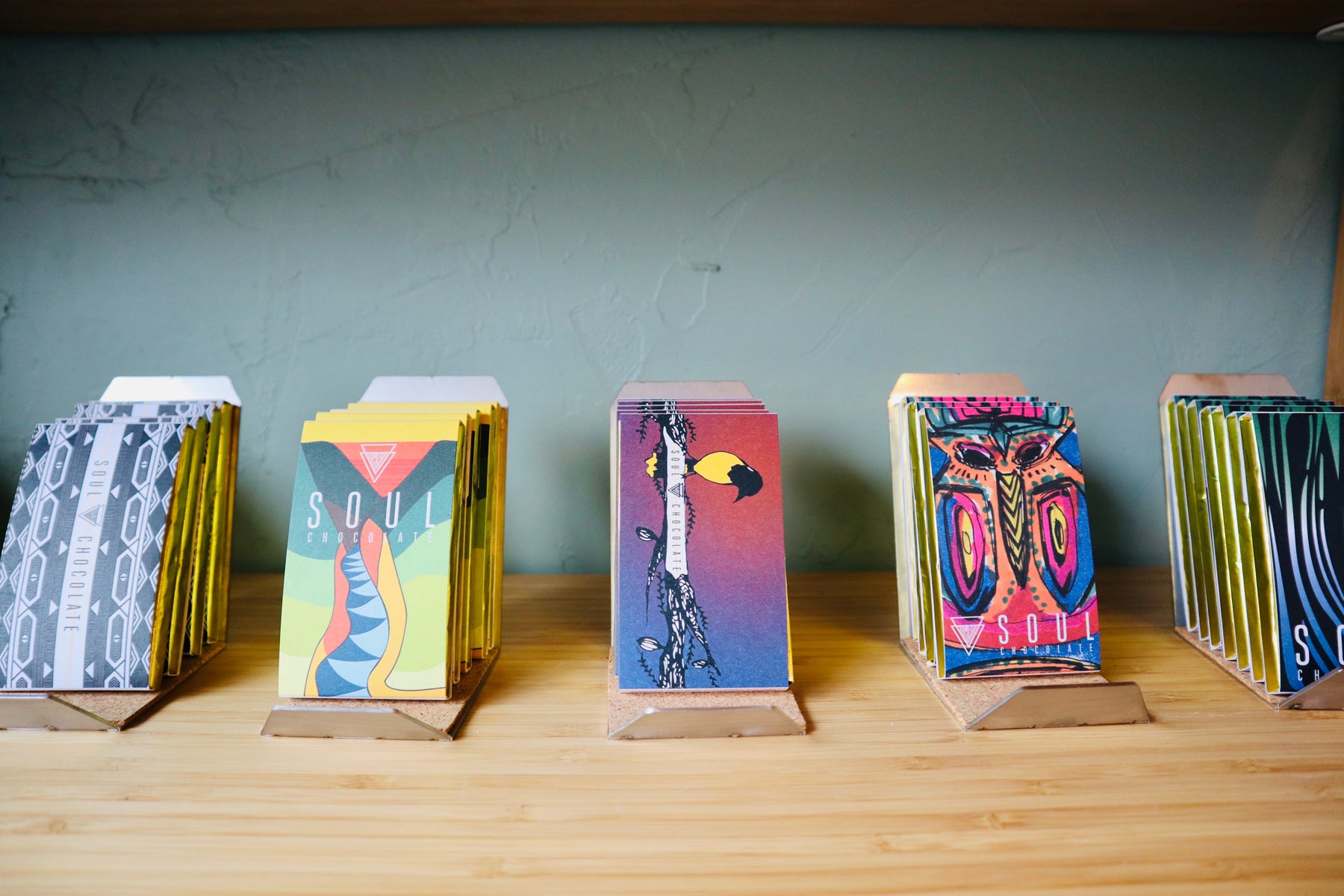
Partners in business and at home, Katie and Kyle Wilson spent a great deal of time working at various eateries within the city before they began their own venture. While Kyle focused on coffee, and Katie on chocolate, it was a “natural progression to have both together,” says Kyle. The couple play off their province’s ever-changing seasons by using its berries in the summer within their bean-to-bar chocolates. They roast cacao and make their own chocolate—offering s’mores in the winter, and regularly switching up their chocolate paninis and flavors of hot chocolate. “With a retail shop, we’ve found that you really have to cater to the [customer’s] needs [and] create a menu that’s exciting for people,” Kyle says. Now, with their eyes set on being more sustainable, the Wilsons are working with producers of reusable cups and connecting with other cafés to create a network of eateries where customers could share the same travel mugs by picking up java from one location and dropping off their cup elsewhere.
A new kind of mom and pop shop
Within my living room in Toronto hangs a 5-foot-by-5-foot stretch monk’s cloth that I’ve needle-punched with yarn to create an abstract oceanscape—a subtle reminder to add a bit of creativity to each day. It came to life when I was in a creative rut, thanks to a workshop by Arounna Khounnoraj, the maker behindBookhou. Along with her husband, John Booth, Arounna runs a storefront and online shop that showcases their handmade homegoods, functionally designed bags, and DIY kits for other makers. Each tote or project bag looks like an art piece in its own right, as the couple “wanted to make art that was utilitarian,” explains Arounna from the second floor of their studio home.
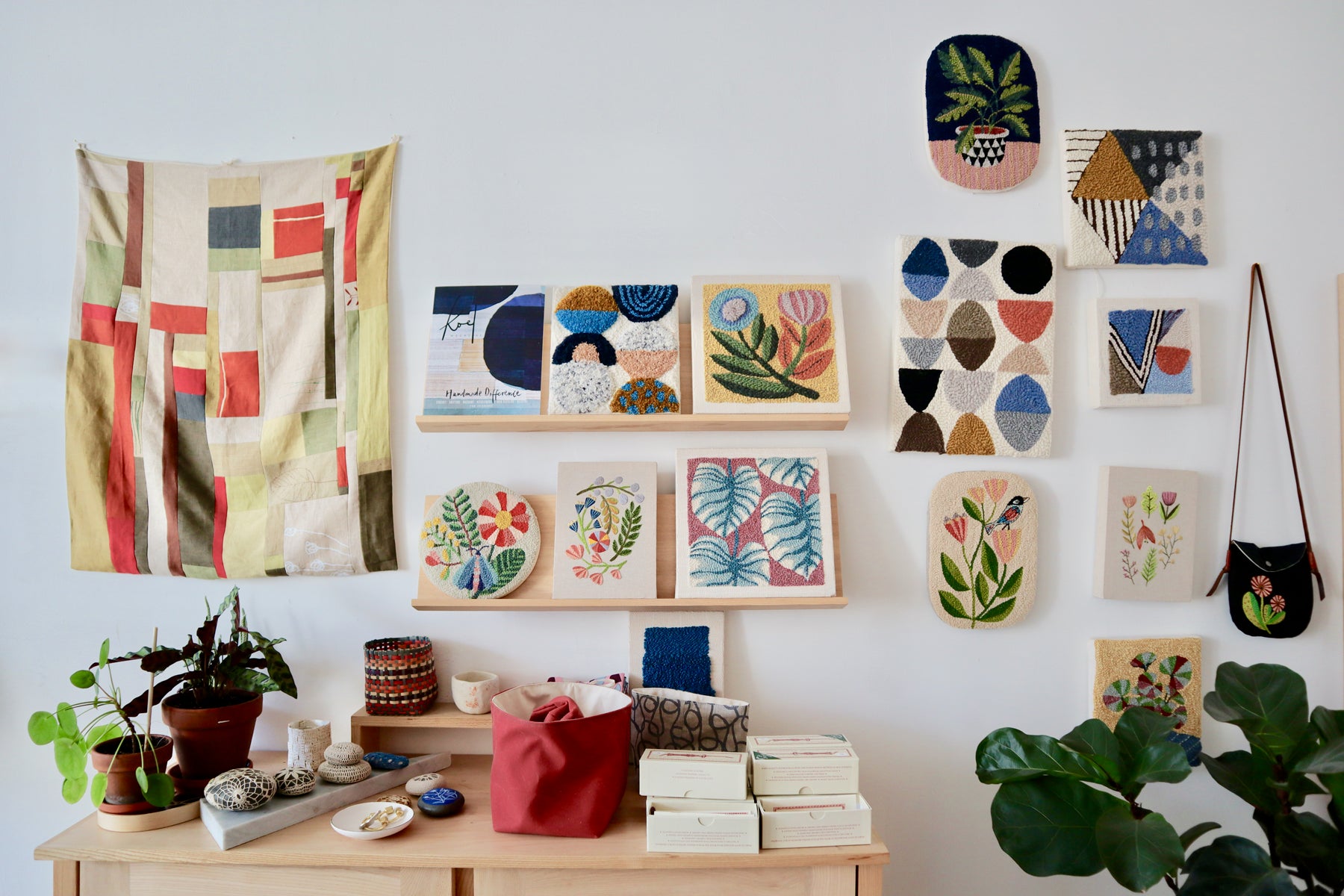
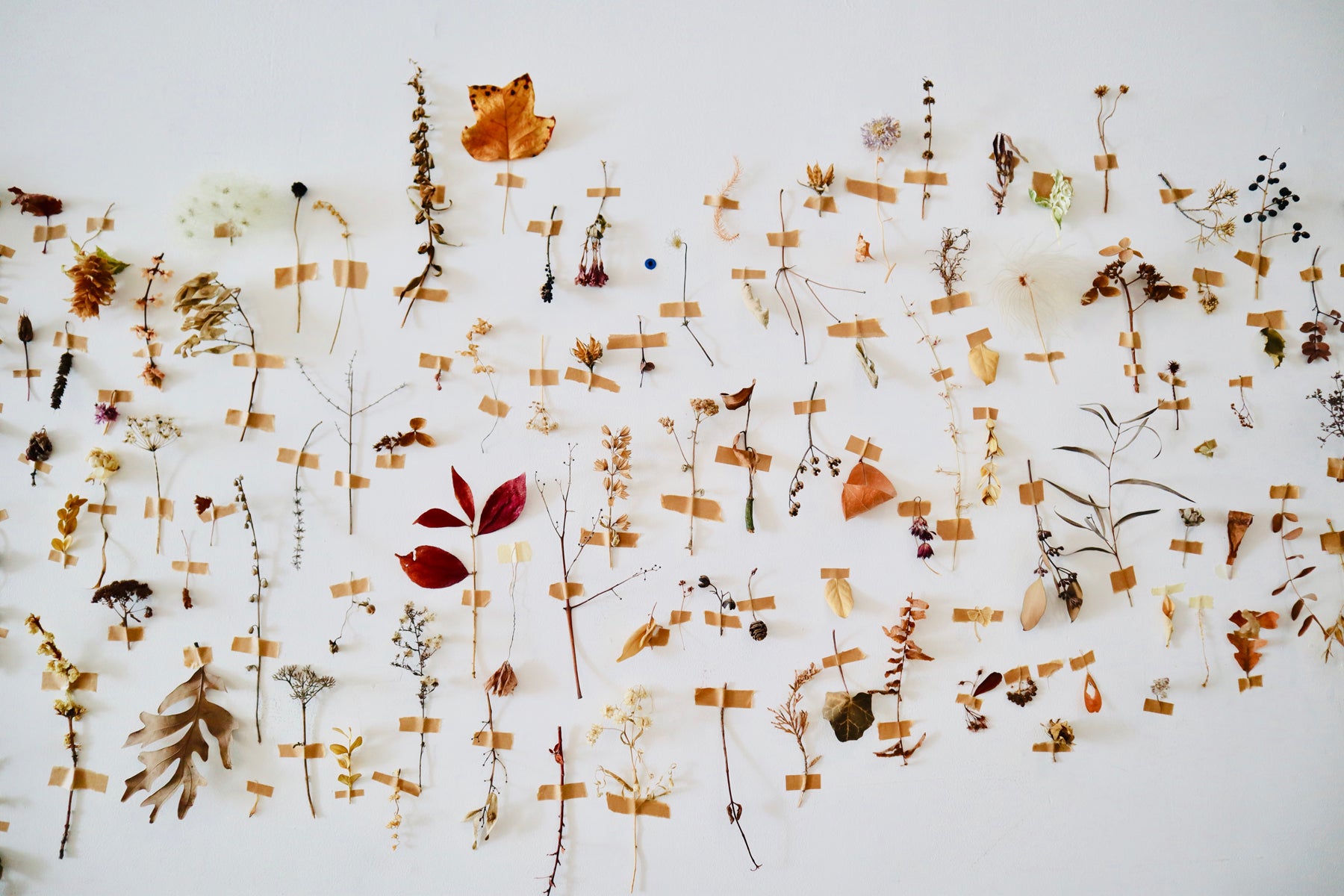

Preserving the best of each harvest
Sophie Kaftal and Bobby Zielinski met when they “physically bumped into each other at a bar one night,” says Sophie. She was working in the culinary arts while Bobby was focused on photography when the two came together with an idea: make fruit preserves under the monikerKitten and the Bear. Despite initially moving from Toronto to New Jersey, where they found success with their jam as a wholesale business and got featured in major American publications, the Six had a certain appeal. Sophie and Bobby felt like moving back for the city’s community vibes, and during a fateful research trip to Toronto, they ended up getting engaged and staying at an apartment right across from what would become their first storefront. “It’s rare that the universe comes full circle like that.” recalls Bobby.
Since establishing Kitten and the Bear here in 2013, the couple has welcomed a baby and moved to a larger storefront. Damson plum and earl grey, rhubarb and lavender as well as nectarine and garam masala are just some of the unique flavor combos that the pair makes from scratch. Their über-Instagrammable café features lush, olive-cushioned seats, and exposed brick, and the ambiance is perfectly paired withSloane Teain a vintage teacup.

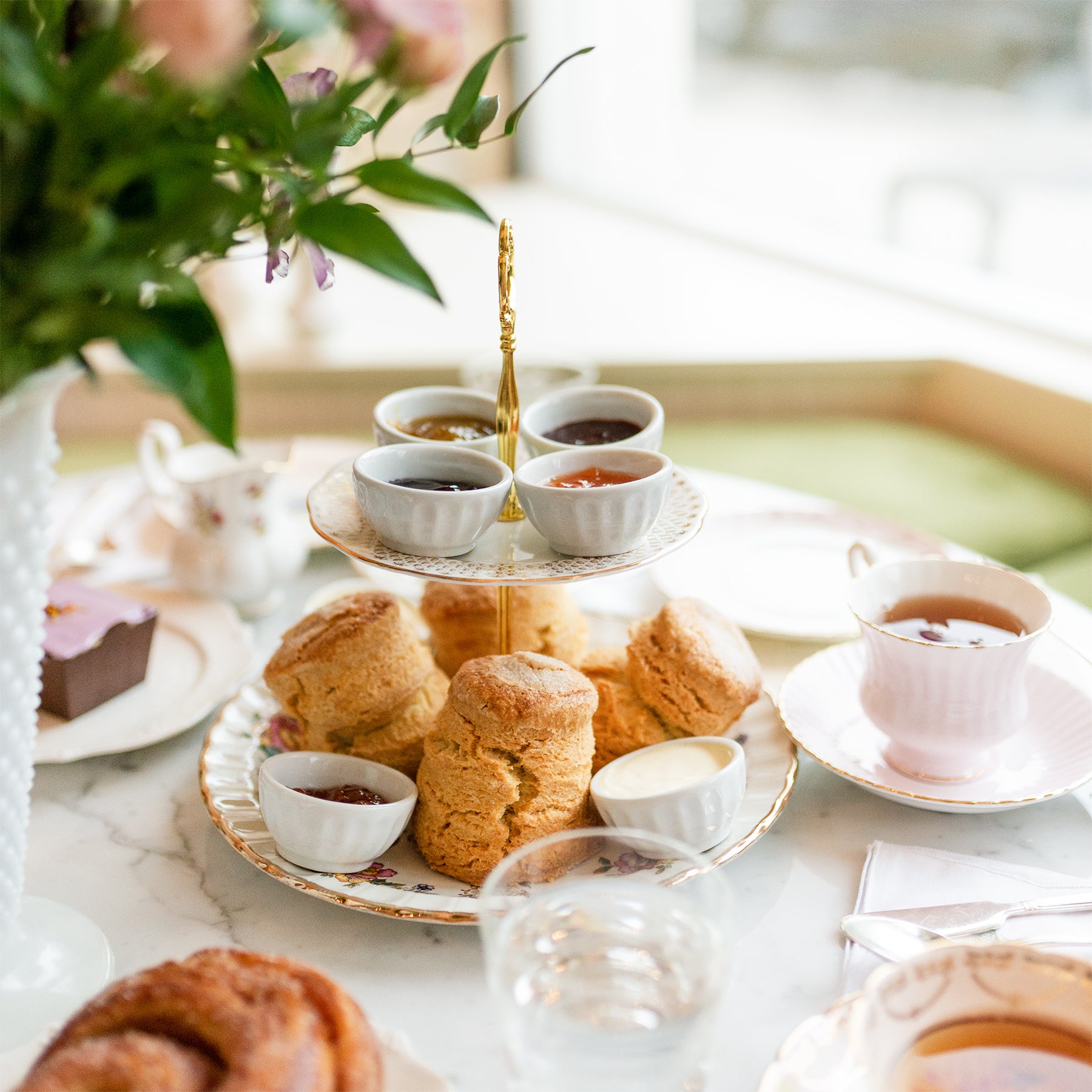

These days, their jam trail is extending throughout more of the city. Fellow eatery owners in various neighborhoods use their spreads on dishes like chicken and waffles as well as charcuterie boards. And their connection to local farmers allows them to experiment with ingredients like “the first papayas ever grown on Ontario soil,” says Sophie.
Nothing but crickets
While writing his masters thesis, Jakub Dzamba was inspired by the abandoned amusement park in Ontario Place. He proposed to make it a place with condos, where residents would use solar panels, wind power, rely on upcycled food waste, and eat, well, bugs—a more sustainable protein source than other meats, like cows.
在更多实实在在的层面,Jakub觉得他公司uld encourage people to farm and consume crickets, while using the bugs’ waste as fertilizer to grow crops. And he even used some in his backyard garden and noticed how it helped his crops grow.
Nearly five years into his business, Jakub now owns an industrial warehouse farm,Qubo Frass, which makes an all-natural fertilizer from cricket droppings and shells. (In case you’re curious: “It’s completely dry, powdery, dust-like substance,” explains Jakub.)
Feature image by Verónica Grech

